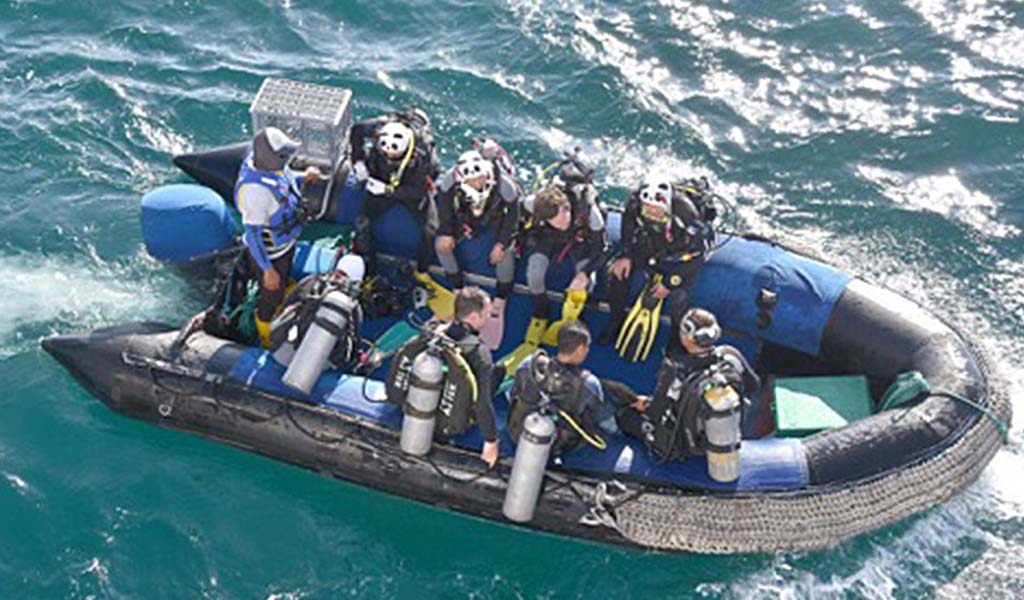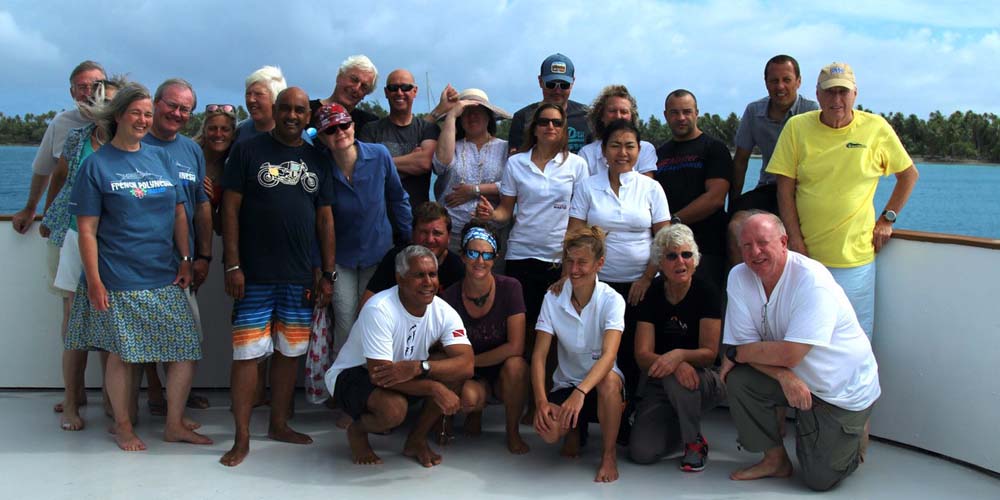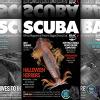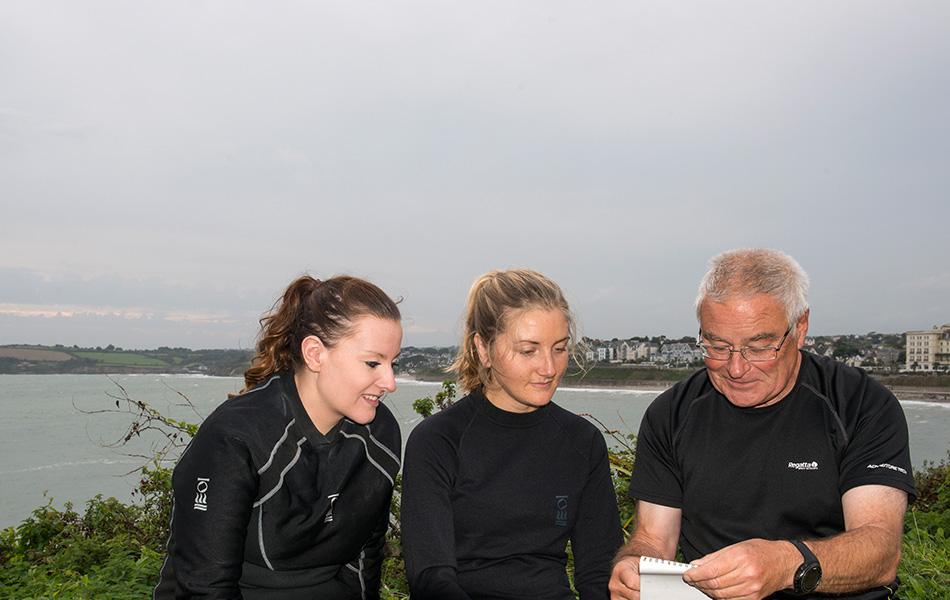
Britain’s leading diving doctors have put together a paper on the virus and its implications for the diving world, which we duplicate in full here.
This article was published in SCUBA magazine, Issue 103 June 2020, on 18th May 2020
SARS-CoV-2 VIRUS (COVID-19) and the Scuba diver Edge, C., Bryson, P., Cope, T., Waterman, M.K.
The outbreak of a world-wide pandemic caused by the novel coronavirus (Severe Acute Respiratory Syndrome Coronavirus 2 (SARS-CoV-2) virus and the resulting disease known as Covid-19 has led to a suspension of recreational scuba diving throughout most of the world as a result of the social restrictions/lockdown imposed by many of the affected countries on their citizens.
As of 28 April 2020, 3.04 million people have been affected by this disease, with approximately 211,000 people dying as a result of complications caused by the virus [1]. Initially the disease causes a dry, almost continuous cough, a high temperature (>38.5 C), muscle pain (myalgia), and headache, with about 60-70% of affected cases also reporting a loss/decrease of smell (anosmia) and a loss of taste (ageusia) -1. Males tend to females.
Some people who are affected by the disease may suffer only mild symptoms or, in some cases no symptoms at all, while others will go on after 5-8 days typically [4] to experience shortness of breath to an extent that they have to be admitted to hospital to have extra oxygen administered via a mask. Some of the most severely affected patients will require a tube to be inserted under anaesthetic into the trachea (tracheal intubation) and their breathing to be taken over by a ventilator.
Once on a ventilator, many patients will take between 14-21 days or even longer to recover sufficiently that they can take over their own breathing again and have the tracheal tube removed (a process known as “ weaning”). The most severely affected patients tend to have preexisting medical conditions with the triad of high blood pressure, type II diabetes mellitus, and obesity being of particular note.
The purpose of this article is to explore the implications that infection with the SARS-CoV-2 virus may have upon scuba divers, both those infected with the virus and those who are not known to be infected by the virus.
Short term precautions against infection by SARS-CoV-2 infection
Diving organisations such as the Professional Association of Diving Instructors (PADI), the Divers Alert Network (DAN), the Undersea and Hyperbaric Medical Society (UHMS) and the Belgian Society for Diving and Hyperbaric Medicine (SBMHS-BVOOG) -2 have put out useful guidelines for scuba divers which give advice that aims to reduce the transmission of the virus between divers. This advice includes:
- Not using saliva (‘spit’) to clear your mask, but to use a defogging solution instead
- Disinfect your mask, BCD (including whistle and oral inflator), snorkel, and your regulators (not just the mouthpieces) thoroughly before and after use using a bleach solution or other suitable cleaning agent
- Avoid the use of communal gearwashing tanks that you cannot be sure have been regularly washed and disinfected
- Avoid practising air-sharing techniques or buddy checks in which two people might share the same regulator. The only situation in which this rule can be relaxed is in the case of a true emergency situation underwater
- Ensure that you practise social distancing by remaining at least two metres away from other divers whilst on the surface or on the boat. Close social groups are known to be particularly adept at spreading the virus
- Wash your hands frequently using soap and water, ensuring that handwashing continues for at least 20 seconds
- If coughing or sneezing, cover your mouth and nose with a disposable tissue preferably or, failing that, with your elbow. Be sure to dispose of the tissue in an environmentally responsible manner
- Avoid the use of rental gear unless you are able to wash and disinfect the gear as above before you go diving with it
- If resuscitation of a diver is required, the recommendation from the Resuscitation Council is that only chest compressions be used; early defibrillation is considered if appropriate; and a cloth or towel be placed over the mouth of the victim.
These rules have been published on several diving travel sites and on the web. However, they were written before the publication of several academic papers that now show that there may be added long-term risks to divers from SARSCoV-2 virus that were not previously appreciated. Research in this area is moving quickly and it may be that some of the recommendations that we make in this article will have to be changed; the hyperlinks given at the end of this article will enable the reader to access the latest information on the web.

Long-term effects of SARS-CoV-2 on divers
Many of you reading this article will be aware of the cruise ship, the ‘Diamond Princess’ that was carrying 3,711 passengers and crew members and docked in Yokohama Bay, Japan. After some passengers disembarked, the Ministry of Health, Labor, and Welfare of Japan reported that 712 passengers had tested positive for the SARS-CoV-2 virus and 10 passengers had died.
The Self-Defense Forces Central Hospital in Tokyo accepted the passengers who tested positive for the virus on board the ship and an analysis of 104 people who agreed to cooperate with a research medical team has now been published [8]. Computed tomography (CT) scans of the lungs were carried out on all 104 passengers, of whom 76 were asymptomatic with only 28 cases being symptomatic for the disease.
Worryingly, 41 of the 76 asymptomatic cases had abnormal CT findings whilst 22 of the 28 symptomatic cases also had abnormal CT findings in the lung fields. These findings included showing areas of lung that were without any signs of the normal alveoli that are normally present in the lungs (the tiny air sacs whose main function is to exchange oxygen from the air with the haemoglobin in the blood and to remove carbon dioxide from the plasma to the air in the lungs). Other areas of the lung showed changes that also indicated that the lung was not functioning properly with regard to gas exchange.
Two of the authors of this article (TC, CE) have been working on the front-line, looking after patients in hospital affected by the SARS-CoV-2 virus and also have colleagues who have been affected by the virus. Although our colleagues fortunately have not been affected by the virus badly enough to require ventilation or extra oxygen, they all report that even after all signs of infection by the virus have passed, they remain breathless on exercise and unable to resume their normal activities and sport.
Currently it is unclear as to how long these symptoms of breathlessness will last for, as the virus has not been thought to be present in the human population for a long enough period of time for serial chest X-rays or CT scans to be performed over a period of months. However, in a Korean patient with a very similar infection due to the related Middle East Respiratory Syndrome (MERS) coronavirus [9], serial CT imaging showed incomplete resolution of the lung changes 23 days after discharge from hospital and with the development of a condition known as “ traction bronchiectasis within retracted consolidation” which is the sort of condition that’s not good for going diving with, owing to the risk of gas trapping and pulmonary barotrauma! [10]
From what has been said above, it will be clear to divers that the SARSCoV-2 virus has the potential to interfere with their enjoyment of scuba-diving as a result of lung damage and possibly damage to other organs such as the heart. For a few, it will unfortunately stop them from diving altogether.
This degree of lung damage is more likely to be seen in those who have had severe symptoms necessitating hospital admission, oxygen therapy and particularly admission to intensive care. For the rest, it may mean a rather more thorough medical than might have been the case before the pandemic. The main change that we can see is that the assessment of lung function will need to be much more thorough in divers who have suffered SARS-CoV-2 infection.
One of the easiest ways to carry this out is to exercise the diver according to a set protocol while the diver is wearing a device on one of their fingers that will allow oxygenation of the blood to be measured (a pulse oximeter). In normal lungs, as a result of the alveolar sacs having very thin membranes between the gas in the lung and the deoxygenated blood in the multiple pulmonary capillaries, the deoxygenated blood is fully oxygenated again by the time the blood has gone about one-third of the way along the capillary.
Only in heavy exercise is the whole length of the capillaries required for full oxygenation of the blood. Any process (such as the pathological process caused by the SARS-CoV-2 virus in the lung) that interferes with this process of oxygenation will cause the oxygen saturation in arterial blood to decrease and this fall can be measured by the pulse oximeter.
Unfortunately, this may not be the only additional medical test required. In some cases, it will be necessary to measure the volume of gas remaining in the lungs at full expiration (the Residual Volume or RV). For physical reasons, this is most easily measured using a technique known as helium dilution. Helium, consisting of very small atoms, has the property of diffusing easily into small spaces. Breathing a known concentration of helium in air, holding one’s breath and then breathing out and measuring the concentration of helium at the end of expiration allows the lung physiologist to calculate the RV. The importance of this RV is that if it is too large, then gas may be trapped in the lungs on ascent, potentially leading to a pneumothorax or to an air embolism.
There are other conditions that may develop owing to SARS-CoV-2 virus, with heart and kidney problems being of the most importance. However, such conditions are likely to present themselves to the diver who should let their diving medical physician know about them.
Control of the SARS-CoV-2 Virus
Much has been written in the press about the possibility of a vaccine to control the spread of the SARS-CoV-2 virus. It is unlikely that a vaccine will be readily available until at least the start of 2021 and even then, a vaccine may not be available. ‘Herd Immunity’ is a term that is also bandied about in the press, but there are problems with this. Herd immunity means allowing sufficient numbers in the population to be infected with the SARS-CoV-2 virus, such that the virus effectively dies out as the population becomes resistant to further infection. One problem with this is that it is currently unclear that infection with the SARS-CoV-2 virus conveys a long enough period of immunity to re-infection by the virus; in South Korea several cases appear to have been found where the subject has apparently recovered from the infection only to become infected again after a period of a few days.
Drug therapy may be another way to mitigate the effects of infection by the SARS-CoV-2 virus. At the time of writing, remdesivir (an antiviral against Ebola virus) is the only drug that has been proven to have a beneficial effect against the SARS-CoV-2 virus, but this was in a rhesus macaque monkey model of the infection [11]. Much research remains to be carried out before use of remdesivir (or an analogue) becomes widespread in practice.
Conclusions
SARS-CoV-2 viral infection has a great potential to affect swathes of the general population, including divers. At present, details of the way in which the virus affects the lungs and other organs are only just beginning to be understood, and knowledge in this area is evolving rapidly. However in the light of what we currently know about the changes that are being seen on CT scans, it is clear that as well as taking immediate steps to prevent SARS-CoV-2 viral infection as outlined above, other medical investigations may have to be performed to keep the diver, his buddy, and their dive team safe during recreational dives. As knowledge of the hazards posed by the virus increases, so recommendations for divers may have to be altered. Any diver who has been exposed to SARS-CoV-2 virus, or been infected by the virus, would be welladvised to seek the advice of a diving medical physician before resuming diving.
References
- http://statista.com/statistics/1105235/coronavirus-2019ncov-cases-recoveriesdeaths-most-affected-countries-worldwide/ accessed on 28/04/2020
- https://doi.org/10.1002/alr.22579 accessed on 29/04/2020
- https://bestpractice.bmj.com/topics/en-gb/3000168/history-exam accessed on 29/04/2020
- https://doi.org/10.1136/bmj.m1470 accessed on 28/04/2020
- https://pros-blog.padi.com/2020/03/26/emea-padi-pros-covid-19-resource-hub/ accessed on 28/04/2020
- https://www.uhms.org/covid-19-information.html accessed on 29/04/2020
- http://www.sbmhs.be/ accessed on 28/04/2020
- https://pubs.rsna.org/doi/pdf/10.1148/ryct.2020200110 accessed on 28/04/2020
- Choi WJ, Lee K-N, Kang E-J, Lee H. “Middle east Respiratory Syndrome-Coronavirus Infection: A Case Report of Serial Computed Tomographic Findings in a Young Male Patient” Korean J Radiol 2016;17(1):166-170, doi.org/10.3348/kjr.2016.17.1.166 accessed on 28/04/2020
- https://piledrivers2404.ca/long-term-impact-on-divers/ accessed on 29/04/2020
- https://doi.org/10.1101/2020.04.15.04316 accessed on 29/04/2020
The authors
Chris Edge is a consultant anaesthetist at the Royal Berkshire NHS Foundation Trust. He has been diving extensively both in the UK and abroad since 1974 using both scuba and a rebreather. He is a member of the UK Diving Medical Committee and an Approved Medical Examiner of Divers and Consultant for the UK Health and Safety Executive. His interests lie in the fields of diabetes and respiratory conditions in diving medicine. He is statistical editor of Diving and Hyperbaric Medicine and of the Journal of the Intensive Care Society.
Tristan Cope is a consultant in Intensive Care Medicine and Medical Director at Liverpool University Hospitals NHS Foundation Trust. He is a technical diver and has been diving since 1982. He is also the Medical Director at the North West Recompression Unit (Wirral, UK) and he has particular interests in the physiology of technical diving and management of decompression illness.
Phil Bryson is Medical Director of Diving Services for Iqarus/ International SOS where he has worked for 10 years. Prior to this he was the Medical Director at DDRC in Plymouth for 11 years having started work there as a volunteer in 1985 whilst training to be a GP. He started diving in 1982. He is a member of the committees of the UKDMC, DMAC and EUBS.
Matt Water man is a GP Partner in Devon. He is a recreational dive instructor and has dived extensively in the UK and abroad. He has worked in diving and hyperbaric medicine with DDRC Healthcare (Plymouth) since 2007. As an HSE Approved Medical Examiner of Divers he assesses candidates for recreational and commercial fitness to dive. He is a member of the UK Diving Medical Committee.
The authors all declare a conflict of interest. They are all active divers and diving doctors who carry out diving medicals.
A BSAC statement on returning to diving post-Lockdown - Editorial response
This article was originally published in SCUBA magazine, Issue 103 June 2020, on 18th May 2020
After a couple of months of not being able to go diving, if we are feeling fit and well, we will be eager to get back in the water as Government restrictions are eased. This is likely to happen at different times around the world, but wherever you are the considerations are similar.
When we get back into diving we will want to do so safely. One critical consideration is that if you have been confirmed to have had COVID-19, whether or not you have seen a doctor, you should seek advice from a UK Diving Medical Committee (UKDMC) medical referee to ensure you are safe to resume diving. Their advice is likely to take account of the severity of any symptoms, the treatment you have received and the level of recovery.
The virus will not have gone away, so a more challenging issue is that of continued prevention of transmission. The UKDMC article preceding this statement raises many points for consideration: how do we maintain social distancing and avoid procedures that will spread the virus by surface contact or aerosol? How do we minimise such risks while maintaining essential safe practices such as buddy checks?
It is important that the buddy check is done thoroughly and clearly. With two-metre separation between buddies, actions need to be exaggerated. Regulator and BC mouthpieces should not be exchanged between buddies, except in an emergency situation in the water.
Training and equipment concerns were addressed by BSAC during the initial stages of the outbreak and this guidance is being reviewed and updated in preparation for a planned slow return to activity.
BSAC is developing further detailed guidance to help each of us devise a plan for progressively working back to our level of diving fitness and familiarity with skills and procedures following the layoff. Having had an enforced break there will be varying degrees of ‘skills fade’, and our equipment will need to be checked out. You may be familiar with the start of season spike in incidents experienced in those parts of the world where divers have a winter break.
Finding a benign sheltered water site somewhere may be a good place to start if pools and other training venues are not open. Our equipment will need to be checked out, to ensure it is fully serviceable. Are cylinders, regulators, BCs and dry suit valves in service? Have soft parts degraded or perished? It is likely that dive shops will be open to offer servicing, if that’s what your equipment needs.
The likelihood is that as restrictions are eased we will all be required to wear PPE facemasks in public places. These will help to reduce aerosol spread of the virus from an infected person who coughs or sneezes and will be useful before and after we have been in the water. The use of such masks is not a substitute for social distancing and any relevant advice on their use issued by the government guidance should be adhered to. However, disposal of such PPE and tissues used needs to be planned in advance, with a waste bag provided so that we can ensure they don’t end up in the water.
Any contaminated, or potentially contaminated, items such as masks and tissues should be safely disposed of and must not be disposed of at sea, or in the water if inland.
The current recommendations from Resuscitation Council (RCUK) referred to, specifically relates to a sudden cardiac arrest where emergency medical services are likely to respond with more advanced ventilation options and defibrillator within around 10 minutes. In line with current BSAC procedures, where the diver appears to have drowned and is in a relatively remote location or offshore in a boat, then CPR including rescue breaths may provide a greater chance of a successful outcome. The analysis conducted within the 2018 Diving Incident report bsac.com/incidentreport on the efficacy of rescue techniques supports this and also emphasises the improvement in outcomes where supplementary oxygen provision and early access to an AED by divers trained in their use are utilised.
When planning for diving, all divers must carefully consider the potential, however unlikely, for a requirement for resuscitation and take account of any inherent risks of virus transmission to prospective rescuers and include appropriate PPE in first aid and oxygen kits.
BSAC guidelines to support a planned return to safe diving will be posted on the BSAC website at www.bsac.com/covidreturn (working title). As evidence grows this advice and guidance will be continually reviewed and updated. Any questions should be directed to safety@bsac.com In the meantime, please keep to the Government guidelines as set out at www.gov.uk/coronavirus.
Join the BSAC community
The BSAC network is working together to keep people connected to the sport. With online training, special interest webinars, competitions, support to clubs and the trade, and much more...we'd love you to join us.

 Author: SCUBA | Posted 20 May 2020
Author: SCUBA | Posted 20 May 2020



